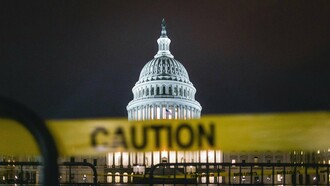The inclination to destroy something is not evidence of an ability to manage it, or reform it, or improve it – quite the contrary.
(Yuval Levin)
The UN is struggling for relevance, survival even.Yet, a mere ten years ago, the Sustainable Development Goals (SDGs) – grandiose in their vision for inclusive growth and planetary stewardship – were adopted by the United Nations General Assembly: Transforming our World: the 2030 Agenda for Sustainable Development. 1
Having served the United Nations for over three decades in many places and functions, people often ask me what, in my view, would keep the U.N. relevant and effective. Better concepts, smarter staff, more money, less political interference? While I have ideas, of course, as a historically focused social scientist, recipes are outside my domain. My preference is the analysis of how we got to where we are and where we will end up if we continue to do what we’re doing. The SDGs are a good study object. Some reflections follow.
The United Nations Charter and all subsequent UN declarations, agreements, and conventions – on human rights, climate change, biological diversity, corruption, development, migration, and whatnot – are conceived in idealism and hope. They affirm the equality, rights and dignity of all persons, even those not yet born, yet are silent on the means to enforce them. This does not disqualify these instruments. It contextualises them.
17 Sustainable Development Goals/sup> were to be achieved by 2030. All countries pledged to work together to eradicate poverty and hunger, protect the planet, foster peace and ensure gender equality. What has happened in the last ten years? Just one-third of the SDGs are on track, with little prospect of achieving any significant progress in the next five years. 3
The 2024 Sustainable Development Goals Report4 highlighted that nearly half the 17 targets are showing minimal or moderate progress, while over a third are stalled or going in reverse since they were adopted. “This report is known as the annual SDG report card, and it shows the world is getting a failing grade,” Secretary-General Guterres said at the press conference to launch5 the comprehensive stocktake.
From the beginning, the path toward the Agenda 2030 was poorly managed, and the blueprint was far too complex and ambiguous. However, even a more coherent design, better data collection, and a comprehensive accountability framework would have made little difference, because the SDGs were mostly a political project. The world’s politics have fundamentally changed.
To wit, Russia’s aggression against Ukraine, genocidal campaigns in the Middle East, Ethiopia, Sudan, and Myanmar, and the Trump administration’s gutting of international organisations, multilateral cooperation, rule-of-law and protection of the global commons.
President Trump, in his speech to the General Assembly on 23 September, not only dismissed the UN as irrelevant but also questioned the organisation’s very principles: peacekeeping, organising responses to global challenges, fostering international cooperation, and financing development. Since his return to the White House, the US has withdrawn from the Paris Agreement, the WHO, and UNESCO. USAID was abolished; development, humanitarian assistance, environmental protection and many more budgets have been slashed. The United Nations was formally advised that the:
The United States rejects and denounces the 2030 Agenda for Sustainable Development and the Sustainable Development Goals, and it will no longer reaffirm them as a matter of course.” Remarks at the UN meeting entitled 58th Plenary Meeting of the General Assembly – United States Mission to the United Nations.6
The UN is sliding into near-irrelevance because rising geopolitical tensions and growing populist sentiment in advanced economies render the current multilateral system out of sync with the necessities of protecting the global commons, let alone with advancing intergenerational justice.This sea change cannot be countered, let alone reversed, by design tweaks to core policies on climate or development.
The U.N.’s norm-setting has been invaluable, but now action is shifting to the national level and to technology. The International Energy Agency expects solar and wind power to surpass coal and natural gas by 2035 and to become the two largest sources of electricity production.7 China – having catalysed an engineering miracle that improved the technology and lowered the cost of solar panels by 99 per cent since 1980 – will capitalise on the world’s growing appetite for cheaper and cleaner power. 8
This is, of course, not to advocate abandoning the United Nations – the case for multilateralism and global governance is stronger than ever – but to recognise that, for the foreseeable future, action must shift to entrepreneurial states, private business, civil society, and academia. The focus must shift from lofty goals to manageable improvements and from global arrangements to ad hoc coalitions of the willing. Hopefully the time to think big will return. For the moment, keeping alive the SDGs, the Paris Agreement, and the Biodiversity Convention is no mean feat.
References
1 Resolution adopted by the General Assembly on 25 September 2015 .
2 Take Action for the Sustainable Development Goals.
3 Sustainable development and unsustainable debt.
4 The Sustainable Development Goals Report 2024.
5 Secretary-General's remarks to the press on the launch of the Sustainable Development Goals Report 2024.
6 Remarks at the UN meeting entitled 58th Plenary Meeting of the General Assembly.
7 International Energy Agency (IEA), “World Energy Outlook 2024,” October 2024; World Energy Outlook 2024.
8 Kyle Chan, “Chinese solar and the German paradox,” High Capacity, April 20, 2024; Chinese solar and the German paradox.















